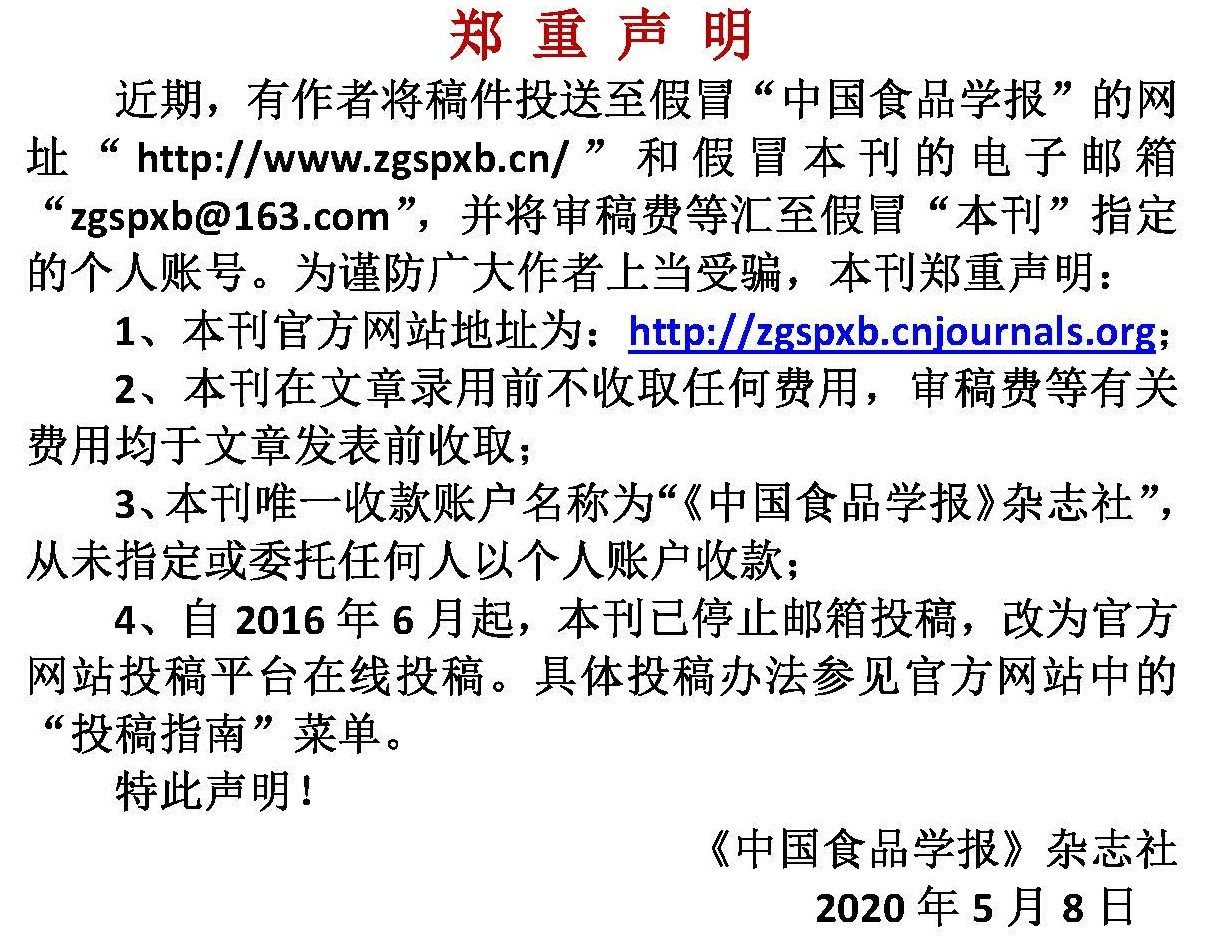多菌种混合制曲生产玫瑰醋的工艺及品质研究
作者:
作者单位:
(1.浙江工商大学食品与生物工程学院 杭州 310018;2.杭州市食品酿造有限公司 浙江湖州 313200;3.湖州老恒和酿造有限公司 浙江湖州 313000)
作者简介:
通讯作者:
中图分类号:
基金项目:
浙江省科技厅公益项目(LGG19C200001)
Research on the Process and Quality of Rosy Vinegar Production by Multi-strain Mixed Cranking
Author:
Affiliation:
(1.School of Food Science & Biotechnology, Zhejiang Gongshang University, Hangzhou 310018;2.Hangzhou Food Brewing Co., Ltd., Huzhou 313200, Zhejiang;3.Huzhou Lao Heng He Brewing Co., Ltd., Huzhou 313000, Zhejiang)
Fund Project:
引用本文
张林祥,周利南,邢利民,冯纬,贺德贵,蒋予箭,朱军莉.多菌种混合制曲生产玫瑰醋的工艺及品质研究[J].中国食品学报,2024,24(9):344-353
复制分享
文章指标
- 点击次数:
- 下载次数:
- HTML阅读次数:
历史
- 收稿日期:2023-09-15
- 最后修改日期:
- 录用日期:
- 在线发布日期: 2024-10-21
- 出版日期:
文章二维码

版权所有 :《中国食品学报》杂志社 京ICP备09084417号-4
地址 :北京市海淀区阜成路北三街8号9层 邮政编码 :100048
电话 :010-65223596 65265375 电子邮箱 :chinaspxb@vip.163.com
技术支持:北京勤云科技发展有限公司
地址 :北京市海淀区阜成路北三街8号9层 邮政编码 :100048
电话 :010-65223596 65265375 电子邮箱 :chinaspxb@vip.163.com
技术支持:北京勤云科技发展有限公司
